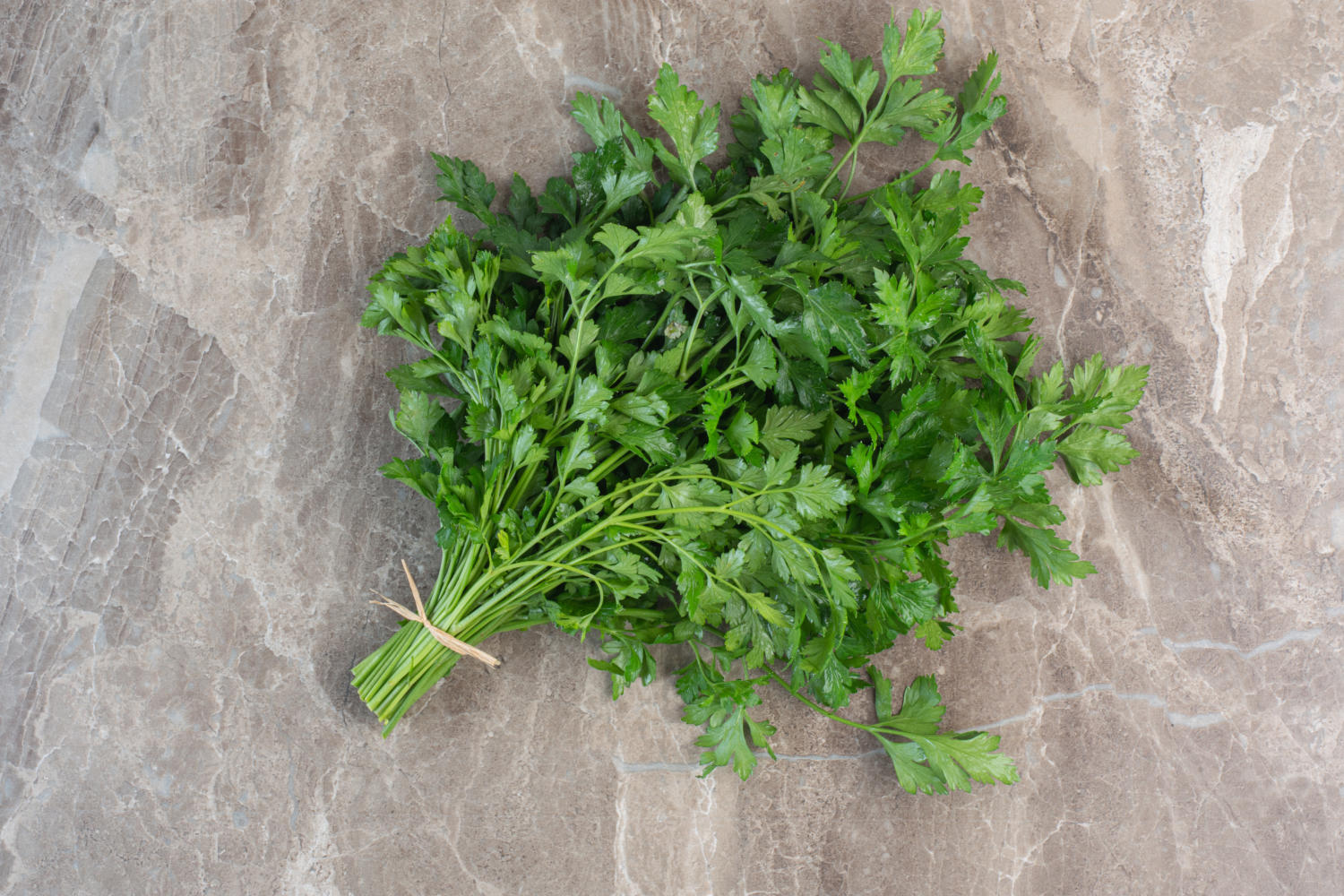
Most gardeners find room for a few herbs. Perhaps the most commonly grown are sage, rosemary and thyme which, along with parsley, make up the Scarborough Fair quartet.
Parsley, however, is different from the other three; sage, rosemary and thyme are all perennials or semi-perennials— that is, they live and can be cropped over a number of years. Parsley, on the other hand, is a biennial, that is, it only crops for a year, producing a seed head instead of leaves if left in the ground into the next season. It is this habit, the need to grow fresh plants each year, that causes many gardeners to give parsley a miss.
One of the problems with cultivating parsley, and another reason it is not grown, is its reluctance to germinate from seed. It can often take four or more weeks to emerge, even if started indoors, rather than outside in the soil. To avoid this tardiness, it can be better to buy young seedlings, usually readily available from garden centres. These can either go straight into the soil or be planted in pots filled with good quality compost. Getting the seedlings in any time from mid-April to mid-summer will do. If pots are used these must be reasonably deep and wide. Regular watering and feeding will also be necessary. Once established, parsley seedlings should grow strongly. Don’t be greedy and over cut, pick only the larger leaves from the outside of the clump rather than shearing the entire rosette back to the base. Cropped carefully, parsley should produce leaves well into the autumn. If winter isn’t too cold it may survive to sprout a new flush of leaves the following spring before the plants eventually throw up a seed head and flower.
Although getting it going can be the biggest problem, there can be a few other issues with parsley. It’s a slug favourite. Seedlings, or even mature plants, can be shredded. On my plot wood pigeons have also added it to their ever-expanding menu. However, probably the most serious threat —and one many gardeners don’t realise— in the cause of poor growth or even crop failure, is potential attacks by the grubs of carrot fly. Like carrots, and several other garden vegetables such as parsnips, parsley is a member of the Apiaceae family, more commonly known as umbellifers. A tell-tale sign that parsley has been struck by carrot fly is stunted growth with outer leaves yellowing and, most characteristically, reddening. Should you be plagued by this pest a means of minimising damage is to sow or plant parsley from late May onwards, a time when carrot fly activity is generally low.
I’ll wrap up by highlighting two sometimes overlooked points. Firstly, keep in mind that parsley isn’t just ‘parsley’. There are two distinct types and a number of named varieties. When it comes to types it’s either ‘curly’ or ‘flat’ leaved. For me, the latter, especially the variety Italian Giant, is far superior. It’s a more robust grower as well as being better flavoured and easier to prepare in the kitchen. Secondly, remember parsley is a resilient plant that can be cropped most months of the year. If seedlings are started in late summer, it can easily be grown under cover through winter. For example, in a used growbag in a greenhouse. Modest pickings can then be had even in the coldest months, but the real bonus will be in spring when a new flush of fresh leaves will appear.
If you want more tips on cultivating parsley check out the Web. A good place to start is the Royal Horticultural Society (see www.rhs.org.uk/herbs/parsley/grow-your-own).









Add a comment